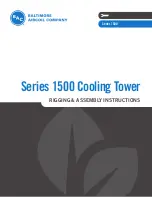
24
INSTALLATION
ENGLISH
Air Purging
Air purging
The air and moisture remaining in the refriger-
ant system have undesirable effects as indi-
cated below.
- Pressure in the system rises.
- Operating current rises.
- Cooling(or heating) efficiency drops.
- Moisture in the refrigerant circuit may freeze
and block capillary tubing.
- Water may lead to corrosion of parts in the
refrigeration system.
Therefore, after evacuating the system, take a
leak test for the piping and tubing between
the indoor and outdoor unit.
Air purging with vacuum pump
- Check that both liquid and gas pipe between
indoor and outdoor have been properly con-
nected.
- Remove the service valve cap from both the
gas and liquid side on the outdoor unit.
- Confirm that both the liquid and gas side
valve are set to the closed position.
- Connect the manifold valve(with pressure
gauge) to the gas pipe side.
- And connect the Nitrogen cylinder to the
service port with charge hoses to the mani-
fold gauge.
- Pressurize the system to no more than 150
P.S.I.G with dry nitrogen gas. Close the nitro-
gen cylinder valve when it shows reading of
150 P.S.I.G.
- Check for leakage with Liquid soap solution.
Do the leakage test at all joints of tubing
(indoor and outdoor) and on the service valve
(both gas and liquid side).
CAUTION
Be sure to use a manifold valve for air
purging. If it is not available, use a stop
valve for this purpose. The "Hi" knob of
the manifold valve must always be kept
close.
!
Lo Hi
Indoor unit
Outdoor unit
Manifold valve
Charge hose
Nitrogen gas
cylinder(in vertical
standing position)
Pressure
gauge
CAUTION
To avoid nitrogen entering the refrigerant
system in a liquid state, the top of the
cylinder must be higher than its bottom
when you pressurize the system. Usually,
the cylinder is used in a vertical standing
position.
!
Summary of Contents for LT-C282PLE0
Page 29: ......






































